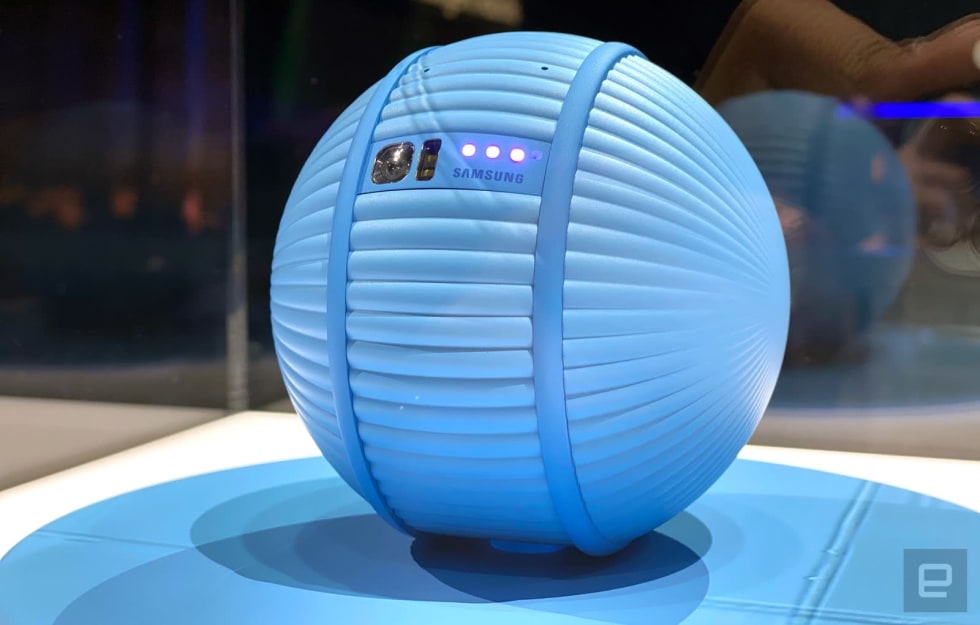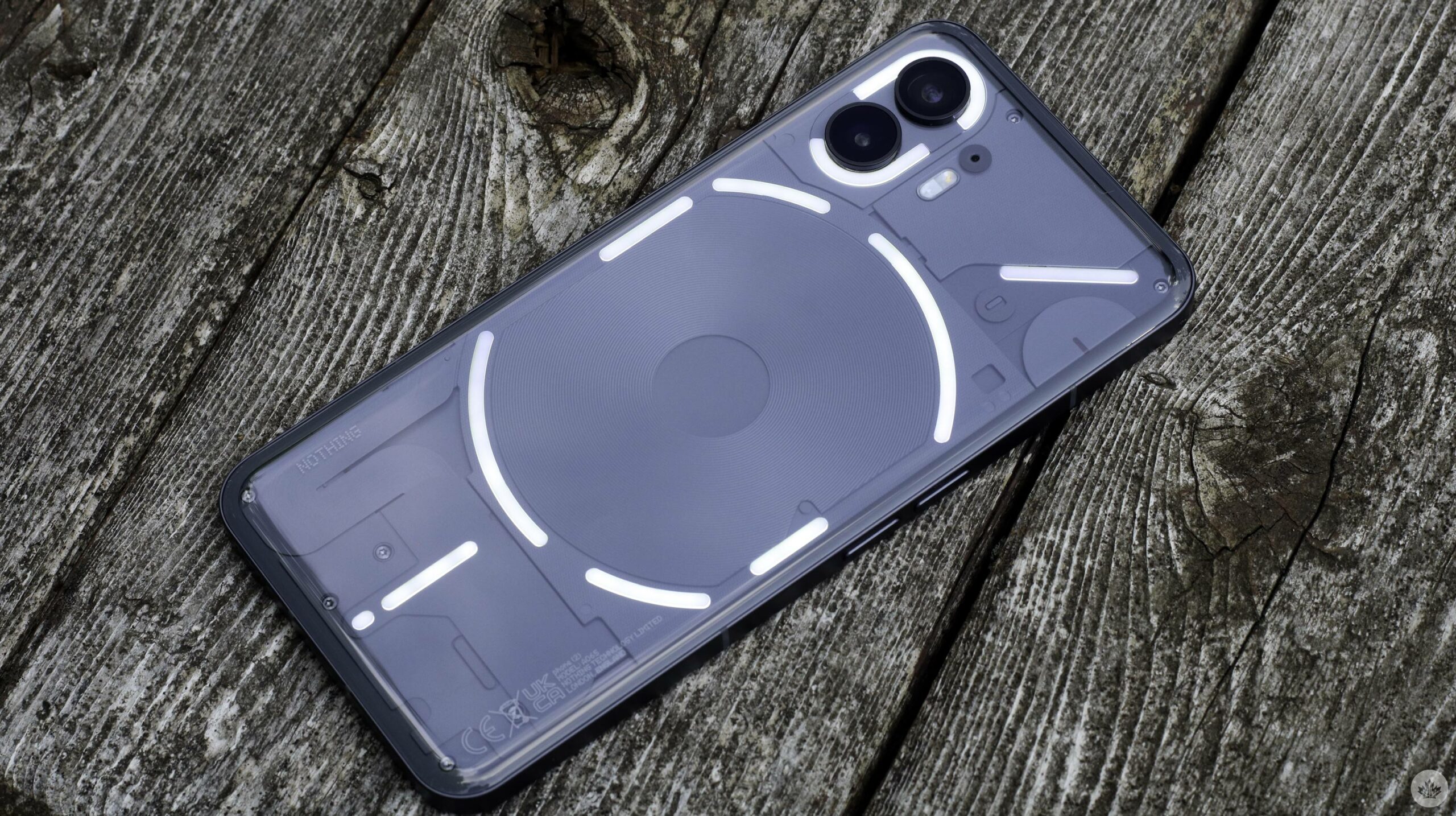The first thing I notice when I pick up Ballie is how light it is — it’s about the size of a hefty grapefruit, but much less dense. And Ballie’s plastic, scalloped frame gives this otherwise nondescript ball a sense of playfulness, one that might not have been possible if Samsung had gone with the cloth finish it first considered.
Tech
An exclusive look at Samsung Ballie – Engadget
I’m told I’m the only non-Samsung staffer to hold Ballie at CES apart from the mayor of Seoul, though I’m not quite sure if that’s true or just PR bluster. Anyway, it doesn’t matter: Ballie may well represent the future of Samsung’s home robot strategy, and it’s only here because a dozen members of the company’s Think Tank Team (TTT) carefully crafted the prototype you might have seen rolling around on-stage during a keynote address.
As I noted in an earlier story, Samsung has been pretty reticent to offer specific details. We still don’t know whether Samsung is making concrete plans to bring Ballie to market, or how much it could cost if and when that happens, but TTT director Leo Jun filled in a few of the gaps for us.
“This is our first step into personal home robots,” Jun told me. “It’s not just a social robot. It’s actually designed to be a companion, and it’s a little bit different in its interpretation but we think this is very believable.”
Crafting a companion
Samsung is no stranger to trotting out robots at big trade shows — just last year, it revealed a trio of service-oriented Bots at CES designed to help manage people’s health care routines, guide customers through stores and, uh, purify air. Those were among Samsung’s first attempts at truly “personal” robots, and you can see how the company tried to give them personalities through human-like characteristics — they have big, blinking eyes rendered on round screens, and two of them had “heads” that swiveled around to look at people and objects. Think Eve from Wall-E, and you’re on the right track.
Ballie is different. It is no way human-like, and for Samsung, devising a way to make a robot ball look and feel like something you’d want to talk to was no small feat. As I mentioned, the original plan was to use a cloth-covered body; that idea was shelved at least partially because realized it might not hold up to certain members of the family.
“You should train your dog not to bite into it all the time,” Jun said. Still, the scalloped design TTT landed on should “withstand some of those scrapes and bumps.”
Since TTT couldn’t very well squeeze a face onto a ball running around at ground level, it also agonized over what Ballie should sound like. In Samsung’s CES keynote demo video, it can be heard making adorable chirpy sounds as it zips around a magnificently expensive-looking home and interacts with its inhabitants. Jun couldn’t confirm that those were the exact cutesy sounds a final Ballie would make, but the team landed on a philosophy it’s pleased with.
“We were very, very specific not to make it robot-y,” Jun said. “Even the sound UI we designed were from very acoustic, round instruments like a hang drum. We layered that with a little processing and included a little robot-y sound at the end to remind people this is a robot, but not the kind of robot you were expecting.”
It’s decisions like this, rather than practical ones about locomotion or power management, that could have the most impact on how this robot is received. And to some extent, Jun concedes that functionality in a product like this is less important than feel.
“It’s not about the physical object being there to trigger IoT devices. It doesn’t need to be there. It doesn’t even need to turn and make sounds and stuff, but it’s for the user. It’s a very natural interface in front of you, and there’s an important immediacy to that.”

The way forward
For a concept prototype, Ballie physically feels nearly ready for production. It rolls around with surprising surety on those two rim-like wheels, and honestly, I’ve handled full, commercial Samsung products that didn’t feel as convincing. Obviously though, but a lot of work needs to happen between the end of CES and a potential launch.
For one, Samsung has to finalize Ballie’s hardware. The company is understandably hesitant to talk details, but we know a few things, like that fact that Ballie doesn’t use one of Samsung’s home-made Exynos chipsets as a brain. It uses a single camera for object and person detection, but it handles all of the image processing directly on-device and apparently lacks the ability to record and store footage of its surroundings entirely. (Whether that’s enough to assuage people’s privacy concerns remains to be seen.)
Perhaps the bigger issue here is that Samsung needs to sort out Ballie’s software. Jun confirmed that just about all of things Ballie could be seen doing in Samsung’s keynote video — rolling around stably, interacting with smart home gadgetry, recognizing the human form, recognizing some voice commands — is more or less possible right now, “but not at the level you’re thinking from a commercial perspective.” What it doesn’t do, for now anyway, is interact with existing Samsung AI efforts like Bixby at all.
“We were thinking, it needs to be flexible. It could be modular, it could come in different combinations. Maybe it’s Bixby. Maybe it’s something else.”
Considering how little a role Bixby played when Samsung CEO H.S. Kim laid out his vision for the Age of Experience, I can’t say I was surprised that it’s currently absent from Ballie. (For those keeping count, the Bixby logo appeared on-screen for just a few moments during the keynote, and was barely mentioned by name.)
For now though, jumping to conclusions about… well, anything related to Ballie would be short-sighted. Samsung seems pretty enthusiastic about the concept, and its approach here — even in these early days — feels easier to embrace than what we say last year. It might take years for Ballie to become a real product, but even if it doesn’t, Samsung deserves some credit for making a machine that people have started to swoon over.
Follow all the latest news from CES 2020 here!
Tech
Nothing customer data leaked after apparent breach – MobileSyrup


The personal information of some Nothing customers has hit the web.
As discovered by Android Authority, a file on a text file-sharing website contains a bunch of Nothing Community profiles. While some of the data is here public information, like usernames, comments and join dates, private information, namely emails, are also visible.
Digging into it further, Android Authority says it couldn’t find any evidence of passwords being leaked. It also notes that the data appears to be from 2022 and affects roughly 2,250 Nothing Community profiles, including some for community managers.
Of course, despite Android Authority‘s investigation, there’s always the chance that other info could have been leaked. Therefore, you might want to keep an eye on your info for any strange activity on top of changing your password.
Android Authority says it’s still awaiting comment from Nothing.
Source: Android Authority
Tech
BikeRadar Podcast | Sea Otter 2024 mountain bike round-up | BikeRadar – BikeRadar


In this episode of the BikeRadar Podcast, George Scott and Jack Luke look back over the best MTB tech they sniffed out at Sea Otter 2024.
Neko Mulally’s bonded DH frame is discussed, alongside the much anticipated Maxxis Aspen ST tyres, which have been teased by professional riders over the past couple of years.
George and Jack also share their thoughts on Atherton’s new S-Range alloy bikes, with the S.170 making its trade show debut after being released in February.
We’ve also put together an article on all the new and oh-so-shiny MTB tech from the show, so be sure to check that out.
How to subscribe to the BikeRadar Podcast
The BikeRadar Podcast takes you to the heart of the issues that matter for bike riders, whether you’re a roadie, mountain biker, gravel rider or commuter.
From the latest tech news, reviews and debates, to interviews with the biggest and most interesting personalities in cycling, the podcast is your direct line into the BikeRadar team.
To make sure you don’t miss a future episode, you can subscribe via Apple, Spotify or wherever you get your podcasts.
Tech
Apple's FineWoven cases rumored to get one final release – AppleInsider


Apple has probably stopped production of its poorly-received FineWoven cases for the iPhone, but a new report from the same herald of its death says there is one last set of seasonal colorways coming.
Now according to leaker Kosutami, who first reported the cancellation, there could still be one more push for the FineWoven cases.
Pressed on the rumor, Kosutami emphasizes later in the same thread that if this is correct, it will be for only one more season. It’s now almost eight months since the launch of the iPhone 15 range, so it’s unlikely that there is to be a new mid-cycle color of the iPhone, but perhaps there can yet be new colors for the FineWoven cases.
Consequently, this rumor can at best be said to be possible, especially if Apple had already committed resources to the new colors. However, since FineWoven has proven to be startlingly poor at stain resistance or even just durability, it’s more believable that it is gone for good than it is that FineWoven will get a last hoorah.
-



 Health23 hours ago
Health23 hours agoSee how chicken farmers are trying to stop the spread of bird flu – Fox 46 Charlotte
-



 Science22 hours ago
Science22 hours agoOsoyoos commuters invited to celebrate Earth Day with the Leg Day challenge – Oliver/Osoyoos News – Castanet.net
-



 Politics22 hours ago
Politics22 hours agoHaberman on why David Pecker testifying is ‘fundamentally different’ – CNN
-
News22 hours ago
Freeland defends budget measures, as premiers push back on federal involvement – CBC News
-
Economy22 hours ago
The Fed's Forecasting Method Looks Increasingly Outdated as Bernanke Pitches an Alternative – Bloomberg
-



 Health20 hours ago
Health20 hours agoIt's possible to rely on plant proteins without sacrificing training gains, new studies say – The Globe and Mail
-
Business21 hours ago
Gildan replacing five directors ahead of AGM, will back two Browning West nominees – Yahoo Canada Finance
-



 Tech20 hours ago
Tech20 hours agoMeta Expands VR Operating System to Third-Party Hardware Makers – MacRumors







